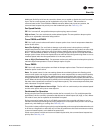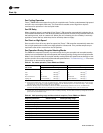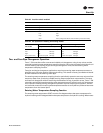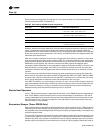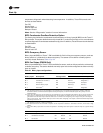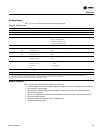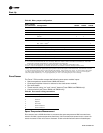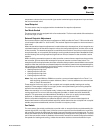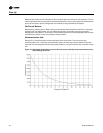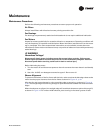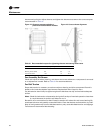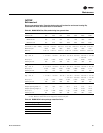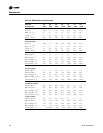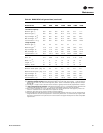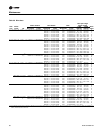
BCXC-SVX01B-EN 61
Start-Up
temperature value exists, the controller ignores the hardwired space temperature input and uses
the communicated value.
Local Setpoint
The zone sensor may be equipped with a thumbwheel for setpoint adjustment.
Fan Mode Switch
The zone sensor may be equipped with a fan mode switch. The fan mode switch offers selections
of off, low, high, or auto.
External Setpoint Adjustment
Zone sensors with an external setpoint adjustment (1kW) provide the Tracer™ ZN controller with
a local setpoint (50 to 85°F or 10 to 29.4°C). The external setpoint is exposed on the zone sensor’s
front cover.
When the hardwired setpoint adjustment is used to determine the setpoints, all unit setpoints are
calculated based on the hardwired setpoint value, the configured setpoints, and the active mode
of the controller. The hardwired setpoint is used with the controller’s occupancy mode (occupied,
occupied standby, or unoccupied), the heating or cooling mode, the temperature deadband values,
and the heating and cooling setpoints (high and low limits) to determine the controller’s active
setpoint.
When a building automation system or other controller communicates a setpoint to the controller,
the controller ignores the hardwired setpoint input and uses the communicated value. The
exception is the unoccupied mode, when the controller always uses the stored default unoccupied
setpoints. After the controller completes all setpoint calculations, based on the requested setpoint,
the occupancy mode, the heating and cooling mode, and other factors, the calculated setpoint is
validated against the following setpoint limits:
• Heating setpoint high limit
• Heating setpoint low limit
• Cooling setpoint high limit
• Cooling setpoint low limit
Note: Only units with ZN510 or ZN520 can receive a communicated setpoint from Tracer™ or
other building automation system. However, Rover™ service software can communicate
with all Tracer ZN controllers.
These setpoint limits only apply to the occupied and occupied standby heating and cooling
setpoints. These setpoint limits do not apply to the unoccupied heating and cooling setpoints
stored in the controller’s configuration.
When the controller is in unoccupied mode, it always uses the stored unoccupied heating and
cooling setpoints.The unit can also be configured to enable or disable the local (hardwired)
setpoint. This parameter provides additional flexibility to allow you to apply communicated,
hardwired, or default setpoints without making physical changes to the unit.
Similar to hardwired setpoints, the effective setpoint value for a communicated setpoint is
determined based on the stored default setpoints (which determines the occupied and occupied
standby temperature deadbands) and the controller’s occupancy mode.
Fan Switch
The zone sensor fan switch provides the controller with an occupied (and occupied standby) fan
request signal (Off, Low, High, Auto). If the fan control request is communicated to the controller,
the controller ignores the hardwired fan switch input and uses the communicated value. The zone
sensor fan switch input can be enabled or disabled through configuration using the Rover™ service
tool. If the zone sensor switch is disabled, the controller resorts to its stored configuration default
fan speeds for heating and cooling, unless the controller receives a communicated fan input.



